VOL- 5, ISSUE- 3, PUNE RESEARCH TIMES (ISSN 2456-0960) JIF 3.18
5.3 TIMES
Area of Article : ALL
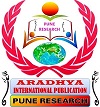
VOL- 5, ISSUE- 3, PUNE RESEARCH TIMES (ISSN 2456-0960) JIF 3.18
5.3 TIMES

VOL- 5, ISSUE- 3, PUNE RESEARCH TIMES (ISSN 2456-0960) JIF 3.18
5.3.1 TIMES
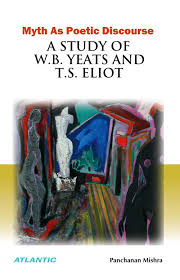
This research paper ingeniously affiliates the
ornating rhetoric dexterity of two flamboyant laureates T.S. Eliot and W.B.
Yeats whose literary craftsmanship reorients the twentieth century subtle
poetic sensibility through the locution of symbols and images in their poetry.
With respect to, this research paper fervently unearths discrete prodigious
notions that W.B. Yeats as the spokesman of “liberal humanism”, where else T.S.
Eliot as the exponent of “Christian humanism”. Synchronously, it
perspicaciously manifests certain prevailing common characteristics of Eliot
and Yeats in the usage of distinctive myths and images to enunciate their
visions in their poetry. Collectively, this research paper leads to the
following conclusion, that W.B. Yeats and T.S. Eliot brought forth the
quintessence to their deep penetrating profound and intimate personal encounters
through unstinting usage of symbols and images in their poetry.
Key Words: Literary art, poetic sensibility, symbols, images, liberal humanism, Christian humanism, myths, intimate, experiences.
VOL- 5, ISSUE- 3, PUNE RESEARCH TIMES (ISSN 2456-0960) JIF 3.18
5.3.2 TIMES
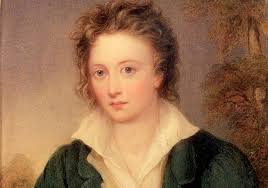
This paper is an attempt to show how P.B.Shelley was regarded as the most
visionary of all English poets and his poetry was described as the fabric of a
vision. “As a revolutionary and a lover and supporter of the French Revolution,
he favoured and sung of the principles and things for which the French
Revolution stood and wished so earnestly to change the social order of the
world and that is why he hated and opposed slavery, tyranny, injustice and
cruelty and cherished a world order based on fairness, justice, equality,
liberty and fraternity.
Keywords : visionary , idealist, humanist, revolutionary, change, slavery, tyranny, injustice, cruelty.
VOL- 5, ISSUE- 3, PUNE RESEARCH TIMES (ISSN 2456-0960) JIF 3.18
5.3.3 TIMES
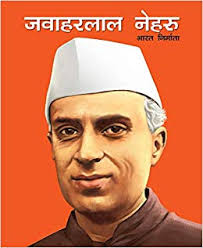
This article projects Nehru as a literary luminary
with professional integrity and practical orientation in thought and
temperament, along with he is the product of both East and West, he make the
world through an immaculate expression of his outer active lifeand deep
emotions, soaring imagination, limitless urges and boundless humanitywith an
artist’s vision.His writings create a great impact on the society, in which he
presents a picture both of himself and the nation and with the deft and
meticulous handling of an artist he merges the two into one.His words have an
evocative power being charged with ardent humanism.
Key Words: Artistic Vision, Historical Facts, Political Background, Scientific Growth, Freedom.
VOL- 5, ISSUE- 3, PUNE RESEARCH TIMES (ISSN 2456-0960) JIF 3.18
5.3.4 TIMES
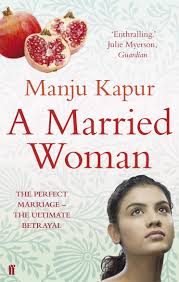
This article analyses the egocentric behavior of women
with the references of the novels of Manju Kapur who show how joint families
can destroy as well as preserve an individual’s life. In depicting the inner
subtlety of woman’s mind, Kapur displays a mature understanding of the female
psyche; she manages to blend the personal with the external. Manju Kapur
focuses on assertion of individuality which leads her protagonist to their
isolation from their relatives or marital disharmony. Kapur indirectly evokes
the women from immature activities of society.
Key Words: Female
Psyche, Oppression, Egoism, Self-assertion, Patriarchal society.
VOL- 5, ISSUE- 3, PUNE RESEARCH TIMES (ISSN 2456-0960) JIF 3.18
5.3.5 TIMES
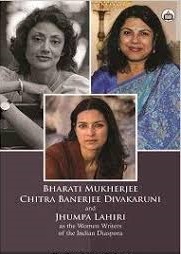
This paper throws light on the
diasporic dilemma in the novels of Bharati Mukherjee, Chitra Banerjee and
Jhumpa Lahiri, as diasporic novelists; they travel in their search for
self-hood and meaning life, this made them to voice out the feelings of the
immigrants in the alien land. In Indian diasporic writing, these writers have
gained a special recognition because of their choice of theme,
characterization, style of writing and narrative techniques etc.
Key Words: Cultural
Conflict, Diasporic dilemma, Isolation, Self-hood, Identity
VOL- 5, ISSUE- 3, PUNE RESEARCH TIMES (ISSN 2456-0960) JIF 3.18
5.3.6 TIMES
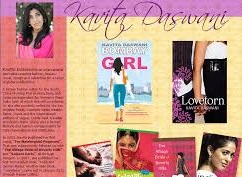
This paper attempts to present
Indian arranged marriages as an institutional domesticity. This paper draws
examples from an Indian-American writer Kavita Daswani’s heroines who stands
against the preformed traditions of arranged marriages. However, they accepts
the situation for the sake of their families and suffers a lot in their lives.
This paper examines what arranged marriages gives to a women and how it was
made into an institution by the society. Thus, by evaluating two powerful
heroines of Kavita Daswani, this paper states arranged marriages as a pure
institutional domesticity.
Key Words: arranged
marriage, caste, society, economy, dowry, tradition, unacceptability.
VOL- 5, ISSUE- 3, PUNE RESEARCH TIMES (ISSN 2456-0960) JIF 3.18
5.3.7 TIMES

This research article at the outset is a humble
attempt to lay focus on the most notable polyphiloprogentive feminist writers
Margaret Atwood and Toni Morrison, who spend their life in the selfless path
through their writings. Writings of Atwood and Morrison uprooted the distinguished
forms, faces, subjects, situations and environment of woman throughout the
history. This research paper focuses on the question that how Atwood and
Morrison chose Literature as a powerful medium to give voice for the women in
the world? These research article further proceeds with a notion that these two
erudite writers as a woman tends to universalize the suffering women through
their novels. Finally this research articleculminate with a point that Atwood
and Morrison created an altruistic cosmos of novels, where one can find answers
to their life’s questions and can shape them to an authentic self.
Key words: Atwood,
Morrison, selfless, novels, woman, feminism, literature, voice, women.
VOL- 5, ISSUE- 3, PUNE RESEARCH TIMES (ISSN 2456-0960) JIF 3.18
5.3.8 TIMES

This paper aims at bringing out some important
strategies and methods employed so as to make language learning effective in
all respects with the sole intention of making it rather universal and
something unique. It also analyses the ultimate goal of learning a language as
an effective process of giving people ‘information’ and ‘communication’.
Keywords : goal,
language, effective, process, information, learning, communication
VOL- 5, ISSUE- 3, PUNE RESEARCH TIMES (ISSN 2456-0960) JIF 3.18
5.3.9 TIMES
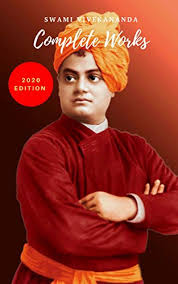
This paper is an attempt to present Swami Vivekananda
as a perfect spiritual guru who always
aims at the harmonious blend of spiritualism and materialism through his
speeches. By analyzing the mesmerizing and spell-bounding speeches of Swamiji,
this paper tells hoe he influenced the world and spread the moralistic thoughts
of Hinduism. Though he was a stern believer of Hinduism, he also had a greater
respect on Buddhism and greater love for Jesus Christ. Hence, whatever the
religion be, Swamiji always proposed love and compassion among human beings.
Thus, this paper is a fine attempt to picturize Swamiji as a prophet who spread
morals and love to the world.
Key Words: spiritualism, materialism, love,
compassion, philosophy, humanity.
VOL- 5, ISSUE- 3, PUNE RESEARCH TIMES (ISSN 2456-0960) JIF 3.18
5.3.10 TIMES
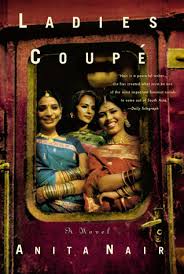
Women are steadily taking up new roles to play both as
individuals and members of families and societies. However even now, huge
majority of women continue to lose their identity, independence and self -
respect. They are like instruments in the hands of the husband in laws. They
should realize how important they are not only at home but also in the society in
which they live. They should assert their independence and know themselves.
This is achieved through the process of ‘self - discovery’.It is focuses on
importance to Anita Nair makes her central characters to expect over this
topic.
VOL- 5, ISSUE- 3, PUNE RESEARCH TIMES (ISSN 2456-0960) JIF 3.18
5.3.11 TIMES

Hydroponics
is a method of growing plants without soil. It is the fastest growing sector of
agriculture and it could very well dominate
food production in the future. This project is used to make a compact
system to automate nutrient dose, pH, water supply and temperature of a
greenhouse hydroponic farm. To gain information about the farm by plotting
graphs using sensor data. This project is used to analyze and monitor the farm
temperature, moisture and maintaining pH value in the water. We using IOT based
hydroponic farms for food production, so we can control the farm temperature,
moisture and nutrients in anywhere. All information about the farm is saved in
cloud storage. A standard website made which will take sensor data place correct
graphs and help farmers to attain information. This website is used to automate
water supply, maintain pH value and temperature of the hydroponic farm and also
sending messages automatically to farmers or owners through mail, whatsapp or
normal messages. The scope of our project is too many IOT enabled hydroponic
farms can be placed near the city areas which will directly cut the
transportation cost. Sensors like pH sensor, LM35 temperature sensor, LDR,
Arduino Microcontroller, ESP8266, Relays and DC motor.
Keywords: Hydroponics, IOT, Sensors, Nutrients,
Cloud, Website.
VOL- 5, ISSUE- 3, PUNE RESEARCH TIMES (ISSN 2456-0960) JIF 3.18
5.3.12 TIMES
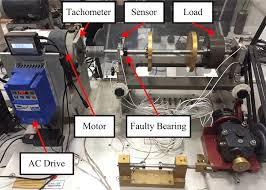
Rolling
element bearings are the most critical but vulnerable mechanical components in
a rotating machine. A bearing failure can lead to a complete machine breakdown
causing unintended interruption to a production process and financial losses.
Many fault detecting techniques have been developed to improve the reliability
of rolling element bearings. This paper deals with those fault detecting
techniques that are used to identify the fault in the bearing by analysing
vibration signal.
Keywords:
Bearing, breakdown, reliability, fault detection techniques, vibration signal.
VOL- 5, ISSUE- 3, PUNE RESEARCH TIMES (ISSN 2456-0960) JIF 3.18
5.3.13 TIMES

The economy of India was in poor
condition even before the Covid-19 disaster. It will further roll down given
the instability likely to occur in the economies of the USA, Japan, Korea,
China, Singapore and European Countries. Volatility in the stock market will
remain to continue. The investment sector has been severely hampered and
investors are trying to play safe and hold cash. Purchasing power and
confidence of the consumer will hit an all-time low. Tax collections will also
drop and a global economic recession seems to be in the offing which will
severely affect the Indian economy and recovery from this crisis could take
over a year or two. According to WTO, world trade is expected to fall by
between 13% and 32% in 2020 due to COVID 19 pandemic that has disturbed normal
economic activity. Share of Indian export in, in total world’s export is 3.5%
and share of Import in world’s import is 3.1% (2019). The trade balance of
India has shown a trade deficit of 9.8 USD bn in March 2020.The unexpected
decline the trade and production has negative consequences on the business and
households.
VOL- 5, ISSUE- 3, PUNE RESEARCH TIMES (ISSN 2456-0960) JIF 3.18
5.3.14 TIMES
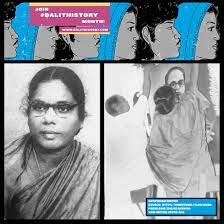
The history of mankind is a saga of
an incessant struggle between the oppressors and oppressed and the life of
Dalit community in India is a perennial story of agony, anguish and struggle
due to the untouchability imposed on them by Hindu Varna system. The Dalits and
women in India are marginalized with the of Varna system super structure just
for the sake of hegemonial and dominating instincts of so-called higher castes.
They are treated as subhuman, inferior and sinful in day today life. But, in
post independence period, caste and gender consciousnesses have dominated the
socio-cultural, political and economical scenario of Indian society. Now-a-days
the deprived sections of society such as Dalit, Adivasi, OBCs and, women are
striving for emancipation from the shackles of age old Traditions and unjust
social order which is based on Four Varna system. In post independence era
there is a great wave of Dalit writing in which Dalit women writers like
Babytai Kamble, Shantabai Kamble, Urmila Pawar, Bama, Meenakand Swami etc. are
the revolutionary writers who explored the suffocated voice of Dalit womanhood
in India. Shantabai Kamble’s Autobiography, Maja Janmachi Chittarkata (A
Kaleidoscopic Story of my Life) is considered as a prominent women Dalit
autobiography that explores the suppressed lives of Dalit women in India. The
present research paper attempts to highlight humiliating memories of caste and
gender discrimination issues in Shantabai Kamble’s Autobiography.
VOL- 5, ISSUE- 3, PUNE RESEARCH TIMES (ISSN 2456-0960) JIF 3.18
5.3.1 टाईम्स
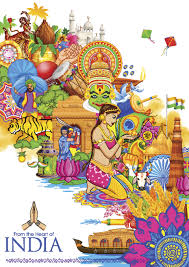
VOL- 5, ISSUE- 3, PUNE RESEARCH TIMES (ISSN 2456-0960) JIF 3.18
5.3.2 टाईम्स
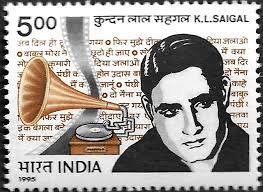
lu~ 1931 ls vkt rd fgUnh fp= txr~ esa vusd xk;d vk;s] ijUrq tks vfeV Nki Lo0 lgxy NksM x, gSa] og vfoLej.kh; gSA Lo0 lgxy] U;w fFk,VlZ ds Jh ohjsUæukFk ljdkj] }kjk fp= txr esa yk;s x;sA dqUnu yky lgxyth dk tUe 4 ,sizSy 1904 bZ- dks vejukFk lgxy ds ?kj tEew esa ,d izfrHkk'kkyh ckyd dk tUe gqvkA buds firk Jh vej pUn lgxy ogka dfpgjh esa lsokjr FksA cpiu ls gh lgxy dh eu i<+kbZ ls vf/kd laxhr dh vksj FkkA ds-,y- lgxy dks cpiu ls gh xkus dk 'kkSd FkkA dqUnu xkus ctkus] ukpus okyksa] Qdhjksa] tksfx;ksa] dOokyksa dh lHkkesa vf/kd mifLFkr jgrs FksA buds firk lsok ls eqDr gksdj vius firkdk ds edku f'kojkt x<+] iatihj tkyU/ku vk clsA buds ,d cMs HkkbZ Fks ftudk kuke jke yky FkkA bUgs Hkh xkus dk cMk 'kkSd FkkA mUgksaus laxhrk/;kid ls gkjeksfu;e lh[kuk vkjEHk fd;kA fl[krs le; os vUnj ls njoktk can dj ysrs FksA vkSj dqUnu ckgj lh<+h;ksa ds mij cSBdh lqurs FksA dqUnu ds HkkbZ dqN fo'ks"k :i fl[k ugh ik,s ijUrq dqUnu lqu lqu dj gh xk;d cu x;sA dqUnu yky lgxy th dk cpiu ,s'k o vkjke vkjke ds u FksA mUgksa us ykSgksj esa jfexaVu VkbZi jkbZVj dEiuh esa] fnYyh jsYos LVs'ku] ij fQj cjsyh vkfn 'kgjks esa ukSdjh ;k dhA